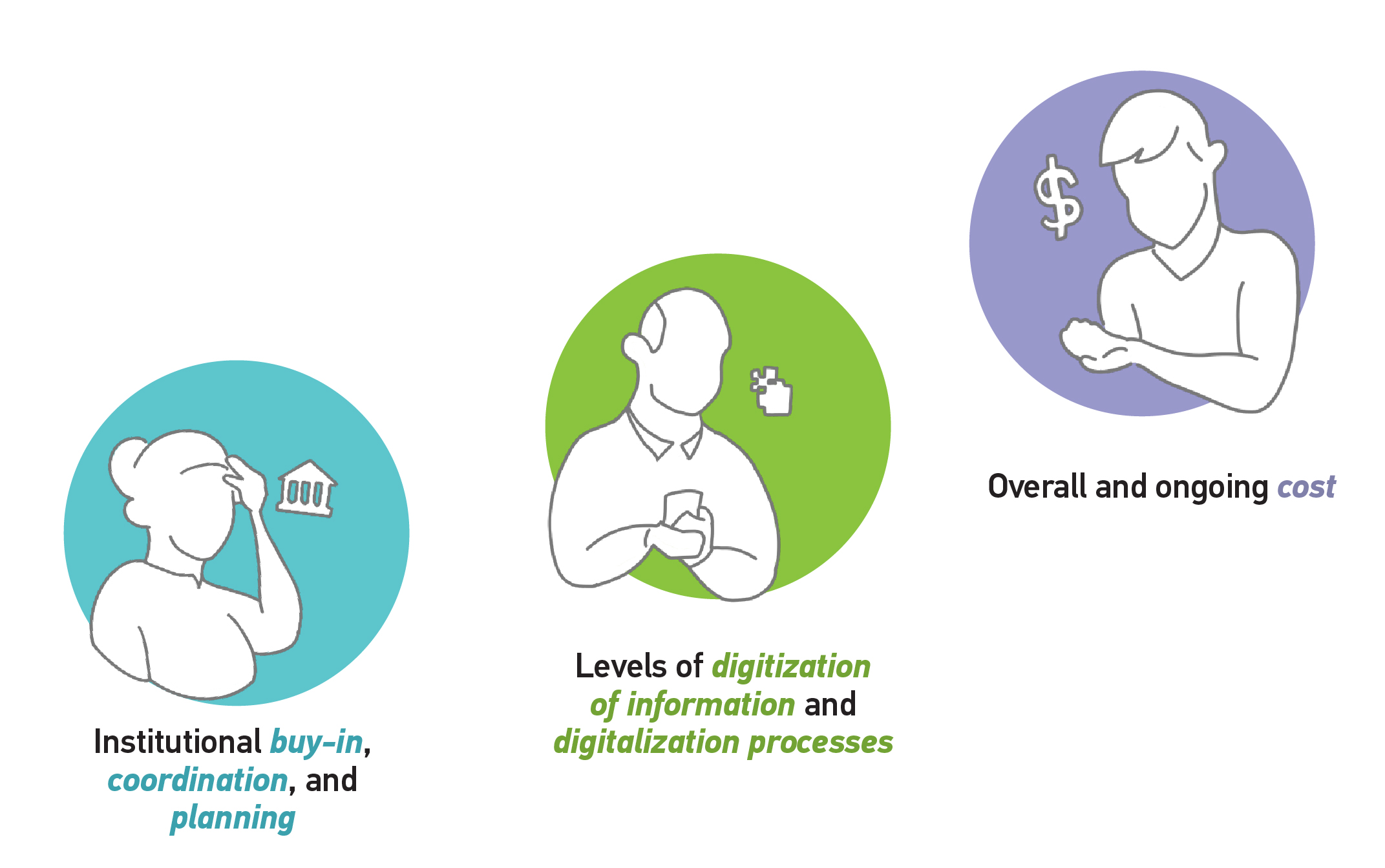FAQ
of
Dx
of
Dx
Digital transformation (Dx) is a series of deep and coordinated culture, workforce, and technology shifts that enable new educational and operating models and transform an institution's business model, strategic directions, and value proposition. Dx can make institutions more resilient, flexible, and relevant as they face an array of increasingly difficult challenges that include declining student enrollment, increased public skepticism, and skyrocketing student debt.
But do key stakeholders understand and support Dx? What are the drivers of Dx? When will Dx happen? Where on the road to Dx are institutions currently? Why are we doing Dx? And, how are we going to get there? Answers to these questions can be found here, in our FAQ of Dx!

WHO
WHAT
WHEN
WHERE
WHY
HOW
WHO understands Dx, and what is their disposition toward it?
Considerable work needs to be done educating the higher education community about digital transformation. Those who are further from decision-making positions, including students, alumni, and faculty, are perceived to have the least understanding of Dx. CIOs, librarians, IR directors, and student success officers, on the other hand, are among those seen to be knowledgeable and supportive.
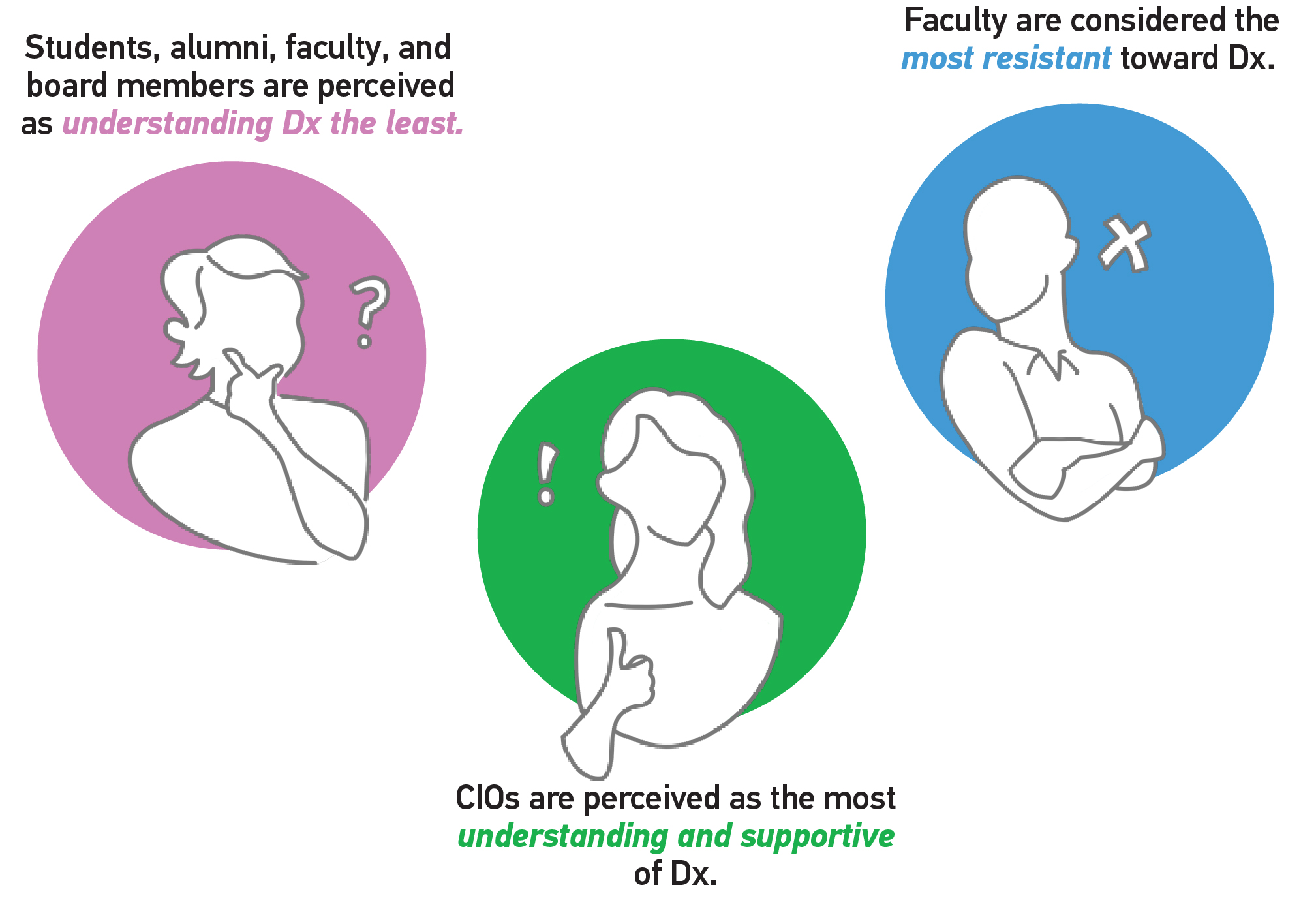

WHAT is driving current institutional planning and investment in Dx?
Student success initiatives and related objectives are the top reasons to support a push for digital transformation. These potential benefits of Dx align well with the Innovation theme of EDUCAUSE’s 2020 Top 10 IT Issues.
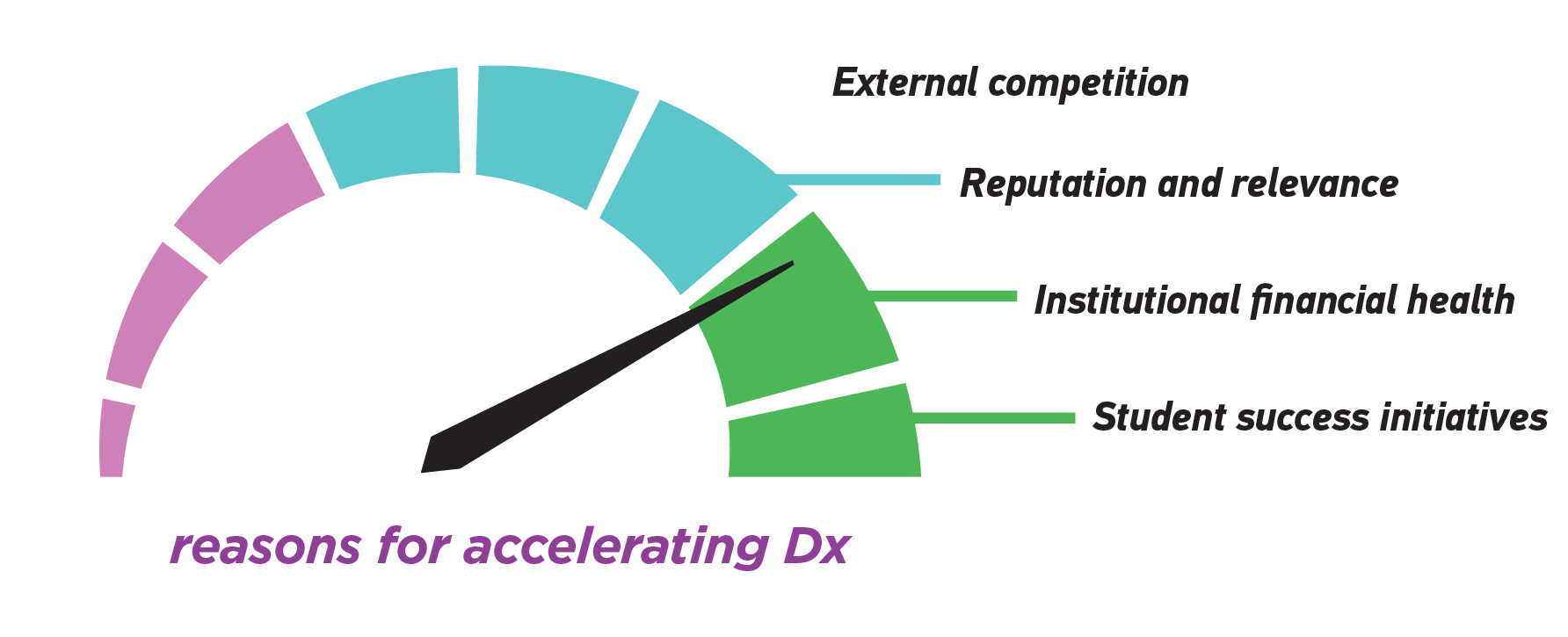

WHEN will we get to Dx?
The importance of Dx has increased over time and is only expected to increase in importance in coming years. While a majority of respondents (84%) think that their institution is in the earliest stages of Dx today, they also predict a dramatic shift toward Dx in the next five years, underscored by a growing rift between those that have a head start today and those that are already falling behind.
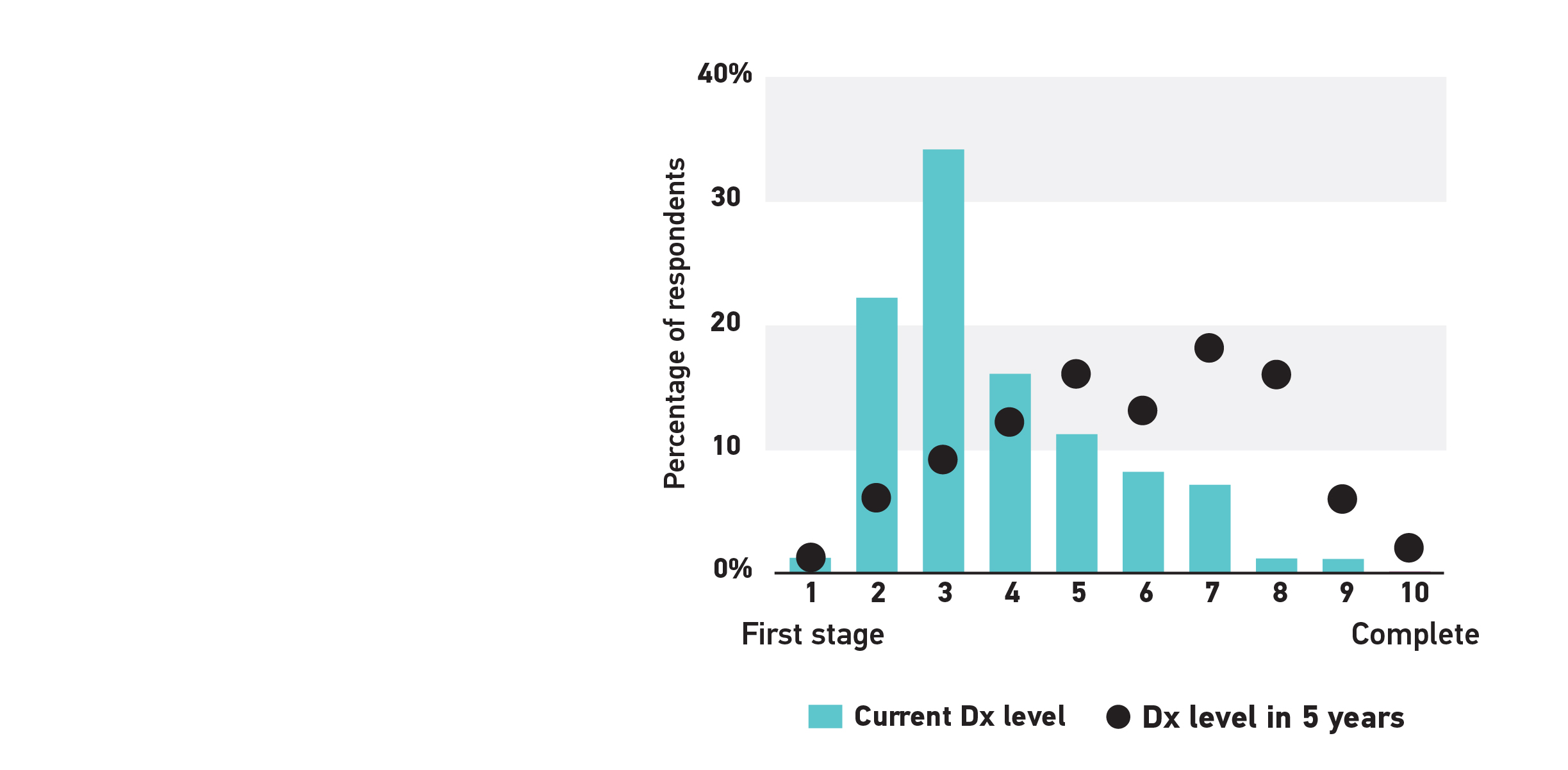



WHERE are different institutional functions on the path to Dx?
Most institutional functions are already moving past a focus on digitization of information, but only five functions have established strong footing in the next stage: focusing on digitalization of processes. Few institutions have yet begun the last part of the journey, moving institutional functions to digital transformation.
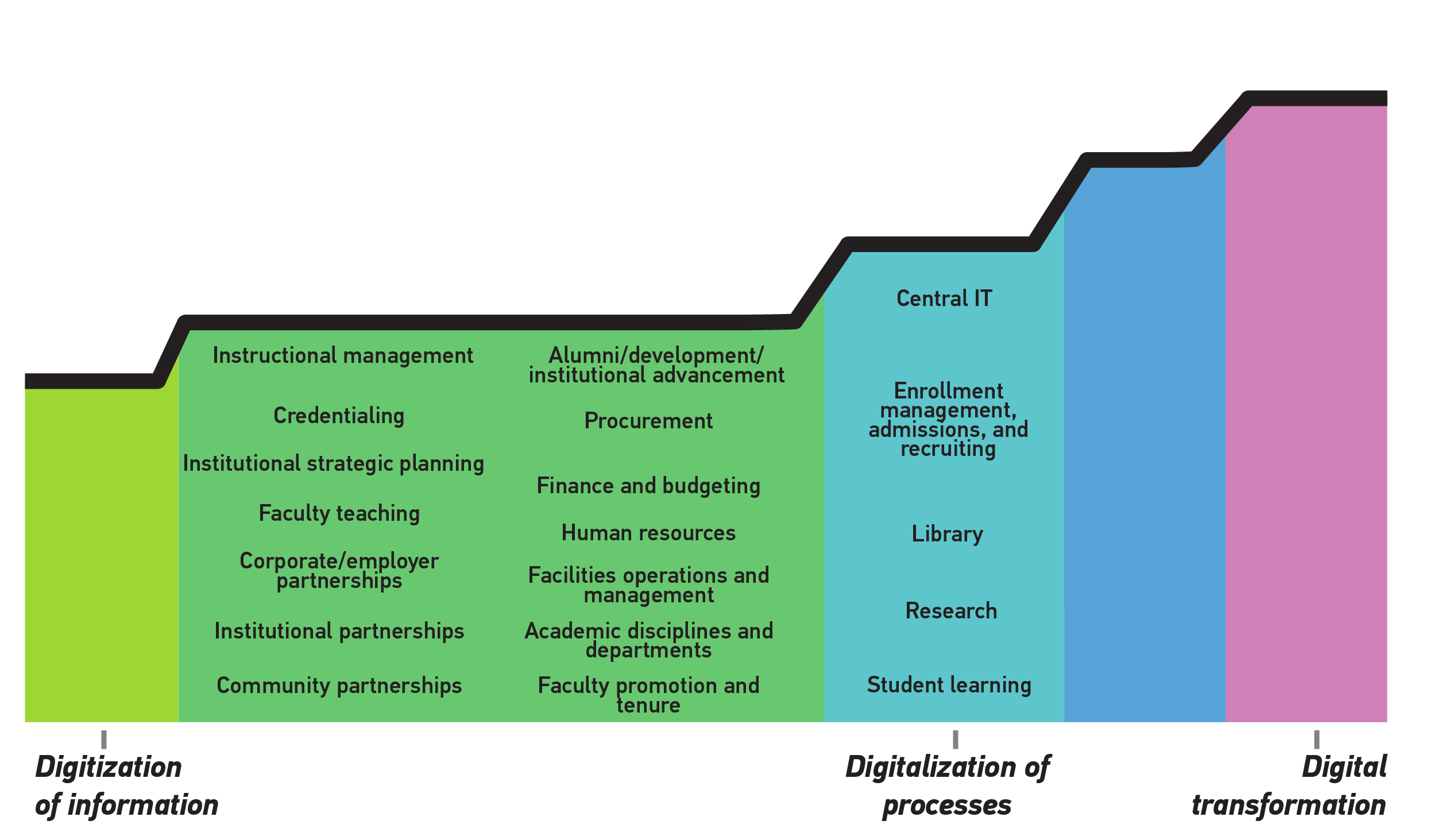

WHY are institutions doing Dx?
Dx can serve many institutional goals, but the most important ones are related to the mission of student success. The major benefits of Dx are believed to be related to a student-centric higher education, student retention and completion, and improved enrollment. Dx is thought to be comparatively less beneficial to expanding the types of credentials institutions award, attracting donors and funders, and generating new sources of income.
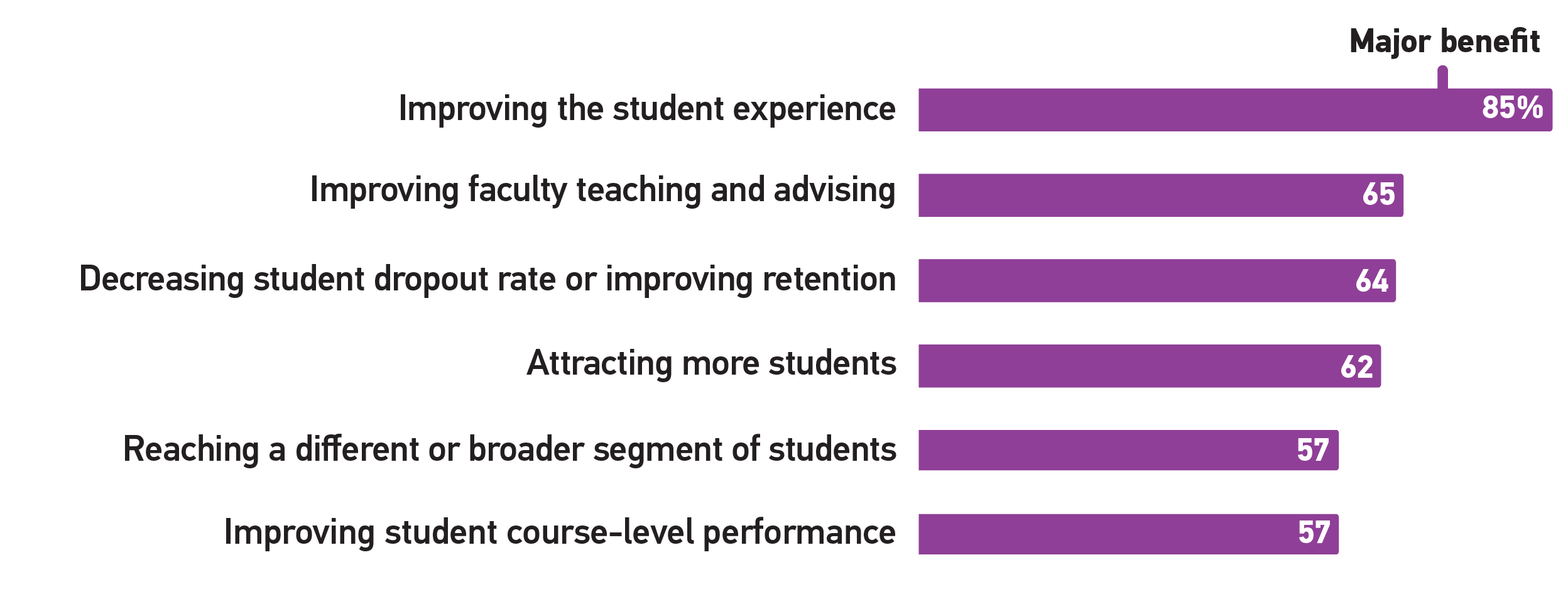

HOW will higher education navigate the obstacles to Dx?
The greatest barriers to Dx are related to change management and costs, while the procedural and technical work of digitization and digitalization are perceived as somewhat less problematic. Information privacy causes the least concern. For institutions to successfully transition to digital transformation, leadership must orchestrate the process while articulating the potential benefits of Dx.
